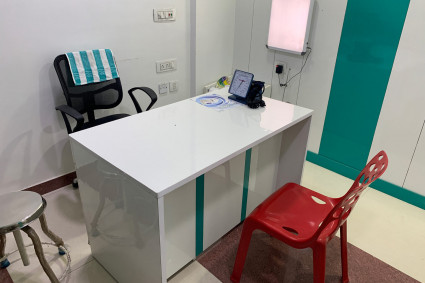
Applied Behavior Analysis (ABA) therapy is the most powerful, evidence-based treatment for those who have behavioral and developmental disabilities. While ABA services can be provided in clinics, schools, and community centers, more families are now discovering the unique advantages of home-based ABA therapy.
This setting allows therapy to take place in the comfort of the child’s familiar environment, making learning more natural and practical. In-home ABA services not only help achieve developmental goals but also build real-life skills that can be used immediately.
Below, we’ll explore the many benefits of home-based ABA therapy and how it supports personalized learning for lasting results.
1. A Familiar and Comfortable Environment
One of the biggest advantages of home ABA therapy is the comfort it provides. Learning in a foreign environment can be intimidating to most children. In the home, they have familiar sights, sounds, and routine surrounding them, which can help them feel more at ease and ready to participate in the learning process.
This feeling of security is likely to induce higher participation, reduced anxiety, and improved collaboration during sessions. With the child feeling safe and protected, they are more likely to respond positively to guidance and learn at a faster pace.
2. Highly Personalized Learning Plans
Home-based ABA therapy allows therapists to design programs that seamlessly fit into a child's daily life. Instead of rehearsing generic situations in a clinic, therapy is tailored to address everyday situations in the home—such as brushing teeth, playing with siblings, or having a bedtime routine.
Since each child has distinct strengths, needs, and learning styles, home-based ABA therapy can be tailored to:
Address specific household challenges
Integrate a child's favorite toy or hobby into learning
Practice skills in everyday settings, such as the kitchen or backyard
This level of customization guarantees that therapy is highly pertinent and significant to the child.
3. More Opportunities for Natural Learning
Learning is methodical and at times separated from life in a clinic. However, at home, learning occurs naturally to blend into the child's everyday environment. For example:
At the time of eating, the therapist can work on communication, requesting, or using a fork and spoon.
At play time with toys, they can work on sharing, turn-taking, and compliance.
At work or chores time, they can work on sequencing, organization, and responsibility.
This carry-over in natural environments ensures that behaviors learned in therapy are performed in the same place where they will be used—making it simple for the child to recall and apply them.
4. Family Involvement and Training
One of the most essential aspects of home ABA therapy is family participation. Parents and caregivers can attend sessions, have questions answered, and are taught skills they can utilize when the therapist is no longer there.
This collaboration between parent and therapist allows for techniques to be practiced every day of the week, which is necessary for advancement. It also provides parents with the ability to better support the development of their child.
5. Flexible Scheduling
Every family enjoys the fact that home ABA therapy is more flexible than clinic-based therapy. Sessions can be scheduled around school schedules, nap times, and family routines, making it simpler to integrate therapy into busy lives.
Flexibility also enables therapy to be moved to other parts of the day to work on specific skills—like working on a morning routine during actual morning hours or working on bedtime skills in the evening hours.
6. Reduced Transitions and Commuting Stress
For children who struggle to acclimate to transitions between routines or have problems with traveling, home-based ABA avoids the stress of driving to a clinic. Time is not only saved for parents, but so are transitions in a child's life, and more energy can be spent on learning.
7. Direct Problem Solving
Because therapy is done in the home setting, the therapists can respond to issues when they occur in real life. If a child has difficulty obeying during mealtime, a therapist can observe the difficulty and provide prompt advice on how to improve obedience.
Such real-life problem-solving ensures interventions are realistic, functional, and useful for the child's daily life.
8. Enhanced Generalization of Skills
In ABA therapy, "generalization" is defined as the ability to apply skills acquired in different locations and contexts. The skills obtained from a clinic setting might need extra efforts to be implemented in the home setting.
Home learning at first implies that the child is already practicing skills in the very place where they will perform them—generalization is spontaneous and sooner.
9. Improved Parent-Therapist Communication
Home-based services encourage open and frequent communication between the family and the therapist. Since parents are actively involved, they can have discussions about observations, progress, and goal revisions earlier when needed.
This frequent sharing of information establishes a working relationship to the advantage of the child.
10. Cost-Effectiveness and Convenience
While ABA therapy cost varies with location and insurance, home services are at times cheaper through avoided transportation costs and fewer hours kept away from work by parents.
The added advantage of no driving is also translated into more time spent on actual therapy—each session optimized.
Optimizing Home-Based ABA Services
In order to maximize gains from in-home ABA therapy, families are able to:
Participate enthusiastically during sessions and implement suggestions.
Communicate with the therapist on a regular basis about difficulties and progress.
Create a setting for support by offering a quiet, distraction-free space for learning.
Reward small successes to keep high motivation levels for the child and family.
If you’re looking for ABA home therapy in North Carolina, we offer personalized in-home services to help your child learn and grow in a familiar, comfortable environment.
Final Thoughts
Home ABA therapy offers a unique combination of comfort, personalization, and ease that can lead to amazing development progress. By treating the child at home, therapists have the ability to create highly practical learning experiences, address challenges in the moment, and involve the whole family to participate.
To many families, in-home ABA services are not merely a convenient choice—it's the best way to guarantee that skills are not only acquired but put into practice where they are needed most: in the home.




